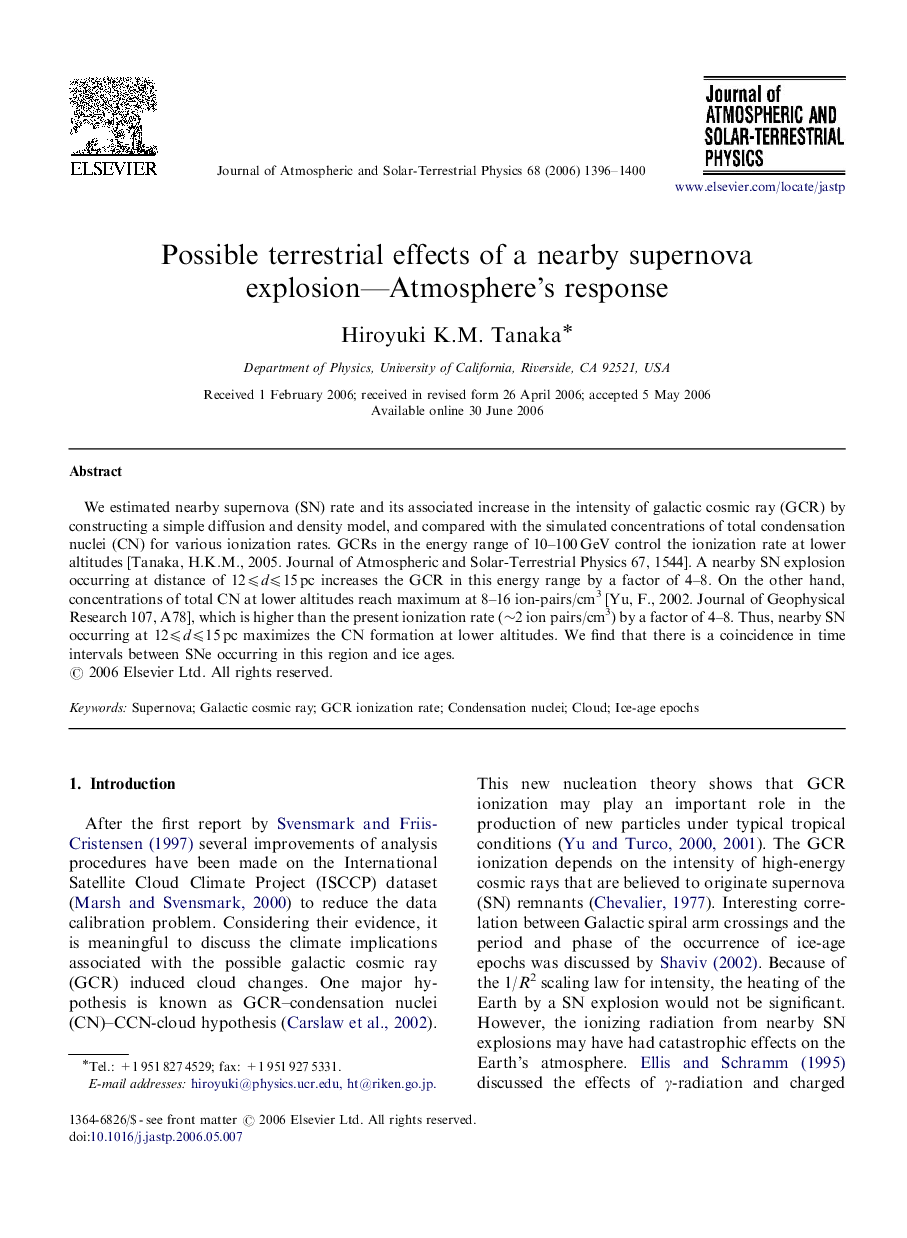| Article ID | Journal | Published Year | Pages | File Type |
|---|---|---|---|---|
| 1778421 | Journal of Atmospheric and Solar-Terrestrial Physics | 2006 | 5 Pages |
We estimated nearby supernova (SN) rate and its associated increase in the intensity of galactic cosmic ray (GCR) by constructing a simple diffusion and density model, and compared with the simulated concentrations of total condensation nuclei (CN) for various ionization rates. GCRs in the energy range of 10–100 GeV control the ionization rate at lower altitudes [Tanaka, H.K.M., 2005. Journal of Atmospheric and Solar-Terrestrial Physics 67, 1544]. A nearby SN explosion occurring at distance of 12⩽d⩽15 pc increases the GCR in this energy range by a factor of 4–8. On the other hand, concentrations of total CN at lower altitudes reach maximum at 8–16 ion-pairs/cm3 [Yu, F., 2002. Journal of Geophysical Research 107, A78], which is higher than the present ionization rate (∼2 ion pairs/cm3) by a factor of 4–8. Thus, nearby SN occurring at 12⩽d⩽15 pc maximizes the CN formation at lower altitudes. We find that there is a coincidence in time intervals between SNe occurring in this region and ice ages.
